The Value of Your Brand
5 min read
Topic: Insurance Marketing Insurance Agency Management Insurance Agency Growth Strategies Start an Agency Grow an Agency
Two things this week made me realize the power of our personal or agency brand.
Yesterday I was having lunch with a member who is a very experienced agent and his youthful new producer. The younger man kept talking about their brand. Frankly, I didn't know they had one. And I kept thinking to myself that their “brand” probably wasn't essential to their success.
Then, this morning, I read a friend of mine's name being used as the gold standard of knowledge, expertise, and service in the Beechcraft pilot community. Someone was asking for a “Paul McCracken” in another area. I realized Paul had gone beyond himself and was now a definition for aviation service quality.
He not only has a brand, but it's a very powerful one!
So what makes the youthful agent have very little branding power in comparison to Paul? The answer to that lies in brand value and brand equity.
But let’s not get ahead of ourselves. We need to define our terms clearly. So, first of all, what is a brand?
Defining brand
Entrepreneur Magazine says a brand is “your promise” to your customer. It is also how you are identified and what you are known for. It is a symbol that stands for more than the artwork.
Some compelling brands become such a standard that they become the very name of the product. This is even true, or maybe especially true, for a commodity.
Think Kleenex.
This made me realize that my thinking on branding is out of touch with reality. We all have a brand, whether we realize it or not. Its power – or lack of it – is very much in our hands. Then how does that promise translate into brand value?
What is brand value?
At a most basic level, brand value is your company's financial valuation if you sold it today. There are a couple of different ways to calculate your brand’s value.
First is market-based brand value, meaning if you sold every right to your business today, how much you could expect to net in the sale (including assets and debts).
Another way to calculate your brand’s financial value is by looking at it more theoretically. If you had to rebuild your entire business from the ground up, how much time and money could you be reasonably expected to spend doing so?
If your brand is your promise, then your brand’s value is the demonstration of how much you live up to that promise — calculated in dollars and cents. If you're not living up to that promise at a fundamental level, your bottom line will reflect that.
How is brand value different from brand equity?
So if a brand’s value is its literal financial valuation, what then is brand equity? I find that people often confuse the terms brand value and brand equity, using them almost interchangeably. They do relate to each other, but they’re not the same term.
My favorite definition of brand equity is taken from David Brier in an interview with Forbes.
Boiling it down, he basically said that a brand's equity is how much people will pay for your products and services over your competition’s and how often they choose your brand based on their life experiences.
When applying this to your business (it doesn’t matter if you’re an independent insurance agent or own a cupcake shop), you need to ask yourself how you can entice that customer or client to choose you over the other guys. Another word for that would be creating customer loyalty.
So if a brand is your promise, it makes sense that your brand’s equity is your company consistently delivering on that promise — providing a favorable experience to the customer.
Now, are you curious about your brand’s equity?
Maybe you already have a feeling of what your customer thinks about your brand. While it's only natural to make assumptions about your clientele's feelings about your business, the only way you can know for sure is to collect and use data to paint a picture of your brand’s reality.
How to measure brand equity
In contrast to brand equity, measuring brand value is pretty straightforward. You can get at that figure by looking at and analyzing your books or getting an external company to value you.
Measuring brand equity, however, may be harder to get at.
Research industry leader Qualtrics has a couple of different philosophies on measuring brand equity. Here are the two main data types they encourage fact finders to use.
- Economic Data: This is where you look at the complete picture of your finances, human resources, and sales data. You’ll not just be looking at the number associated with your bank account but also some future-facing predictions.
- Emotional Data: This is where art meets science, where you’re trying to see what makes your customer tick. While quantifying this is more challenging than just how many decimal places your bank accounts have, you can still capture this data using customer satisfaction surveys, marketing campaigns, and brand awareness campaigns.
Using the emotional data will help fill in the gaps where financial predictions and cost-benefit analyses fall short.
Once you understand this number more fully, now is the time to improve your brand’s equity (which will also help your brand’s value).
Improving brand equity
Some of my tips on improving your brand’s equity may seem like no-brainers, but you would be surprised at how some companies play fast and loose with the basics, such as:
Providing Exemplary Customer Service: If your customer is walking away with no impression of your customer service team (or worse, a bad one), that’s one massive liability for your brand’s equity.
Delivering Real Customer Experiences: It’s not just about customer service, but the brand experience. Are you making it a priority to provide your customer with positive brand associations? Good opportunities to make memories? By optimizing this chance, you could even become a part of a family tradition.
Focus on Long-Term Outcomes: Trends come and go, but your long-term opinion of your brand should be what you focus on. Is opinion of your brand changing year over year? If it's not improving, you know that you may need to shake something up.
Building your Brand (Again): Sometimes, you may need to reevaluate that core brand promise is and rebuild from the ground up. If what you’ve been doing hasn’t been working from a bird’s eye, it may be time to pivot.
Just take it from one of America’s favorite brands: Coca-Cola.
Coca-cola: a study in great brand equity
A great example of brand equity is the classic American brand Coca-Cola. While sometimes there have been missteps over this soft drink powerhouse’s 135-year history (New Coke anyone?), most of their adjustments have complemented the evolving lives of the consumers.
It struck me that Coke’s branding, and the market power it can represent, may be a tremendous demonstration of how to improve the brand value of an independent insurance agency in the age of commoditization.
Harnessing the power of your brand’s equity
My challenge to you over the next few days is to give some serious thought to your brand and your "promise" to your customer.
Remember my story from the top of this piece? How can you become a “Paul McCracken”?
If you transform your brand’s equity, you’ll transform your brand’s value. I guarantee it will work — and business will never be the same. And if you’re ready to get to work growing your own independent insurance agency, we’d love to work with you.
Tony Caldwell
Tony Caldwell is a modern “renaissance man,” who is not only immensely successful in the field of insurance, but is also a writer, children’s advocate, mentor and even a licensed pilot.
Always keen on helping others make their dreams come true, Tony and his team have helped independent agents grow into more than 250 independent agencies. This has made OAA the number one ranked Strategic Master Agency of SIAA for the last 5 years, and one of Oklahoma's 25 Best Companies to Work for.
Tony loves to share his knowledge, insight and wisdom through his bestselling books as well as in free mediums including podcasts and blogs.
Tony and his family are members of Crossings Community Church, and he is very active in community initiatives: he’s chairman of It’s My Community Initiative, Inc., a nonprofit working with disadvantaged people in Oklahoma City; and chairman of the Oklahoma Board of Juvenile Affairs., and he has served through many other organizations including the Salvation Army, Last Frontier Council of the Boy Scouts of America, and the Rotary Club.
In his spare time, Tony enjoys time with his family. He’s also an active outdoorsman and instrument-rated commercial pilot.
Recent Posts
Insurance Marketing
Brand Your Insurance Agency to Build Connection, ...
When you see the words, “Coca Cola,” they mean something. Yes, it’s the name of a soda brand, but...
Insurance Marketing
Who's Running Your Business?
Insurance Agency owners are always asking me, how can I make more money on the business I'm already...


